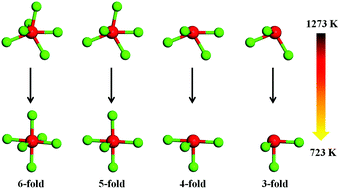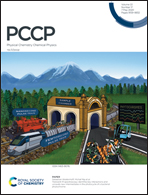Origin of short- and medium-range order in supercooled liquid Ge3Sb2Te6 using ab initio molecular dynamics simulations
Abstract
Phase-change materials such as Ge–Sb–Te compounds have attracted much attention due to their potential value in electrical data storage. In contrast to the amorphous and crystalline phases, supercooled liquids are far from being deeply understood despite their inevitable role in both amorphization and crystallization processes. To this end, we have studied the dynamics properties and structural characteristics of liquid and supercooled liquid Ge3Sb2Te6 during the fast cooling process. As the temperature decreases, chemical bonds become more homogeneous, but coordination numbers of Ge, Sb and Te atoms change very little. Meanwhile, the structural order of short-range configuration is obviously enhanced. Further studies suggest that Ge-centered, Sb-centered and Te-centered configurations change to the more ordered defective octahedrons mainly by adjusting the bond-angle relationship and bond length, rather than just by changing the coordination environment. It is the more ordered octahedrons that promote the formation of medium-range order. Our findings provide a deep insight into the origin of local structural order in supercooled liquid Ge3Sb2Te6, which is of great importance for the comprehensive understanding of amorphization and crystallization processes.



 Please wait while we load your content...
Please wait while we load your content...